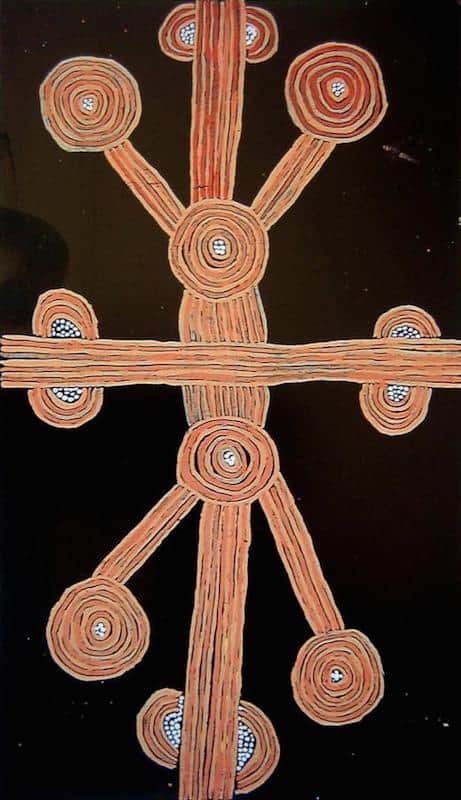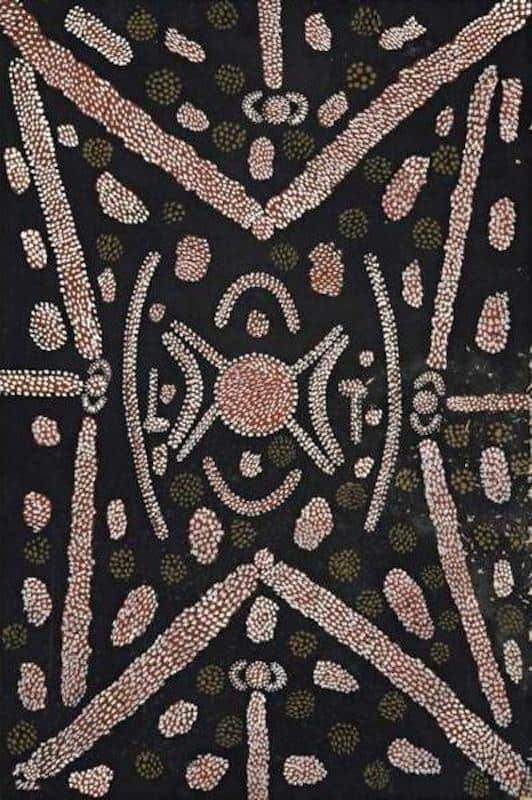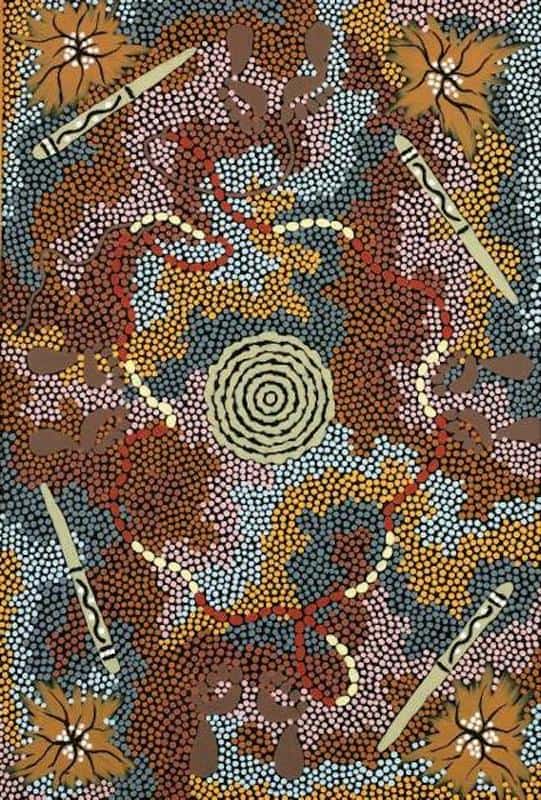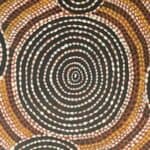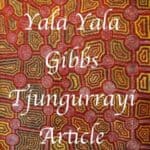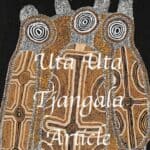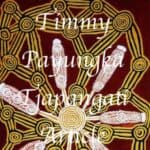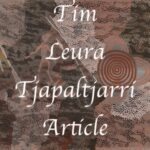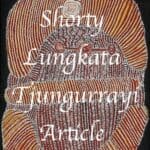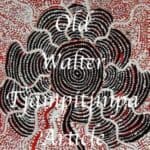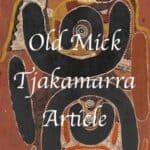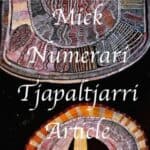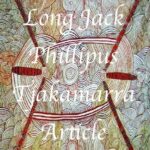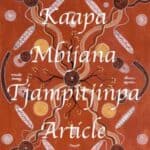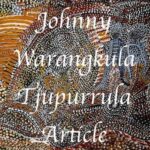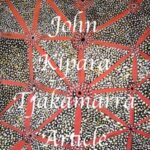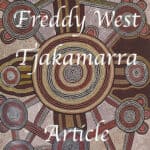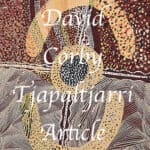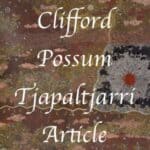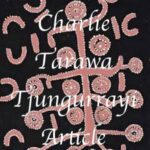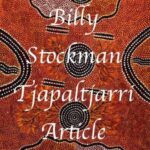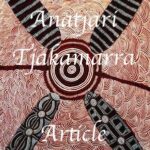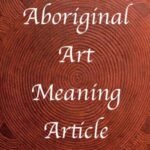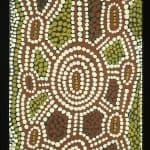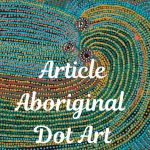Aboriginal Dot Art
Aboriginal dot art came into the Western worlds mainstream consciousness in the Mid 1970’s. Dot Art emerged from the Western Desert. In particular dot art first came from an Aboriginal settlement called Papunya.
Today Aboriginal dot art paintings vary from the finest of minute marks neatly arranged on the canvas to the wild and multi-colored large finger dotting.
Some artists merge their dots into lines, or even into wide areas of connecting dots. These merged dots have more of a stippled effect than a dotted appearance.
The defining criterion for a dot painting is the technique used. Aboriginal Dot art is produced by repeated imprints of a paint covered object. The object can be a brush, dotting stick, match or any other implement used to apply dots of paint to a surface.
The aim of this article is to briefly explain the history and meaning of aboriginal dot art. Aboriginal dot art has evolved and is still evolving today.
If you have aboriginal dot art to sell I may be able to help. I mainly deal with early artists and artists that I feel were important in the evolution of Aboriginal Art. Feel free to send me an image.
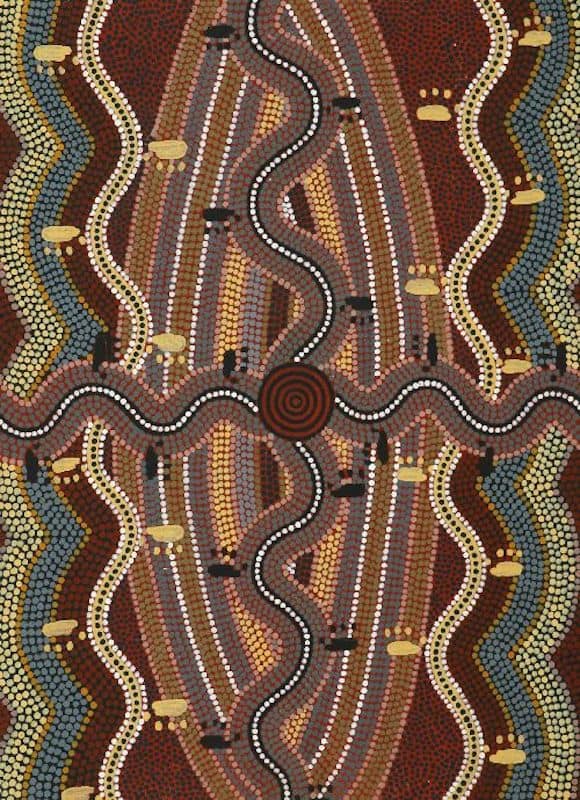
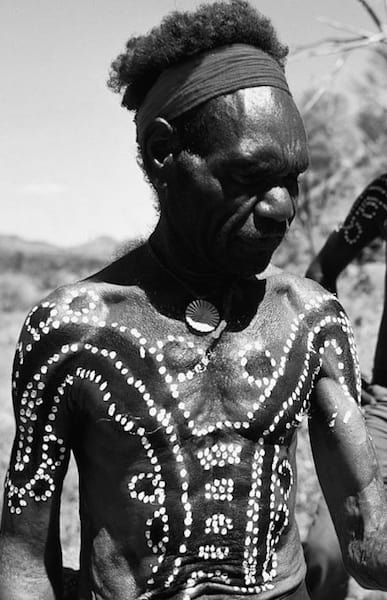
Aboriginal Dot Art history
Dots have been used in Aboriginal art for millennia. Aboriginal dot art was used for ceremonial body painting, in sand paintings petroglyphs and applied to carved artifacts.
These early forms of aboriginal dot art remained largely unknown to most of the Western world.
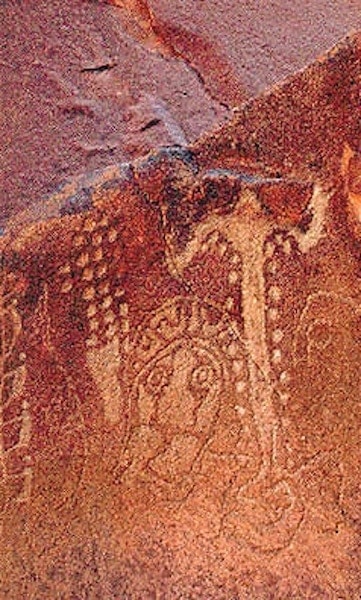
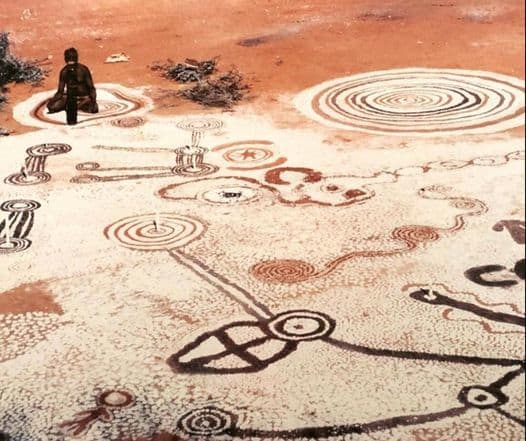
Aboriginal art is intimately intertwined with ceremony and sacred knowledge. Much of this secret and sacred knowledge could only be divulged to the initiated.
Traditional Aboriginal sand painting. Designs similar to this were made for use during initiation ceremony and destroyed after use.
Early Central desert art
In the early 1970s, a primary school art teacher called Geoffrey Barton was working in the remote Aboriginal community of Papunya. He noticed that his students were drawing traditional designs in the red dirt of the school’s playground. Barton tried to encourage them to make these designs on paper but soon learned that it was only initiated men who were supposed to make these sacred designs.
He started a men’s painting group and in doing so unwittingly started the Aboriginal art movement.
In the early years, the aboriginal men’s painting group used very few dots when painting their sacred stories. Artists like Kaapa Anatjari and Long Jack painted sacred designs mainly using lines.
Between 1971 and 1974 aboriginal art from this area used some dots but they were not the dominant feature. These paintings are often symmetrical and related directly ancestral songlines.
These early works are collectible because they are full of Aboriginal art meaning.
In other areas of Australia like Oenpelli the art is mainly linework
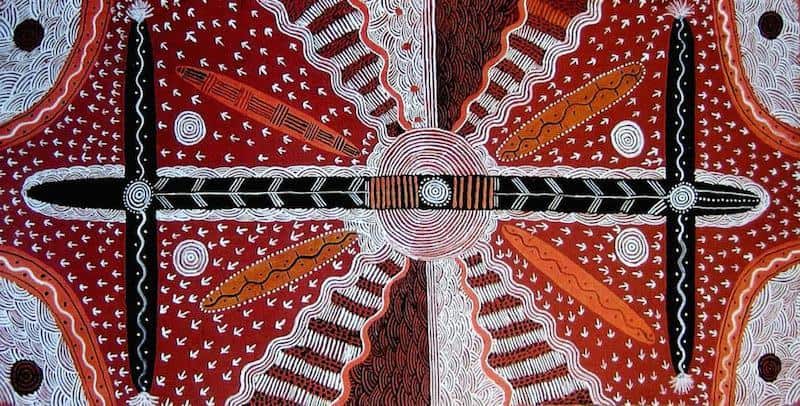
Aboriginal dot paintings emerge
In 1974 other aboriginal groups saw Papunya paintings for sale in Perth and Alice Springs. They were upset and angry about the paintings They felt the designs on the paintings revealed secret and sacred knowledge.
To overcome objections from these other aboriginal groups the Papunya artists obscured the sacred designs with dots. Aboriginal dot art was born.
Aboriginal Art Meaning
The dots themselves in early aboriginal dot art had no set meaning. That is to say, dots were used to obscure sacred designs, as a background infill or to indicate rain. It was often the equivalent of someone pixilating part of an image. By dotting a particular secret piece of the canvas the sacred information was obscured.
Until the 1980s the underlying designs and songlines were the main elements of the painting. The dots either a background filler or an obscuring technique. Certain artist like Clifford Possum and Tim Leura thrived making these secular paintings while other artists faded.
Johnny Warrangula bought dot painting to the forefront of aboriginal art with his rain and water dreamings
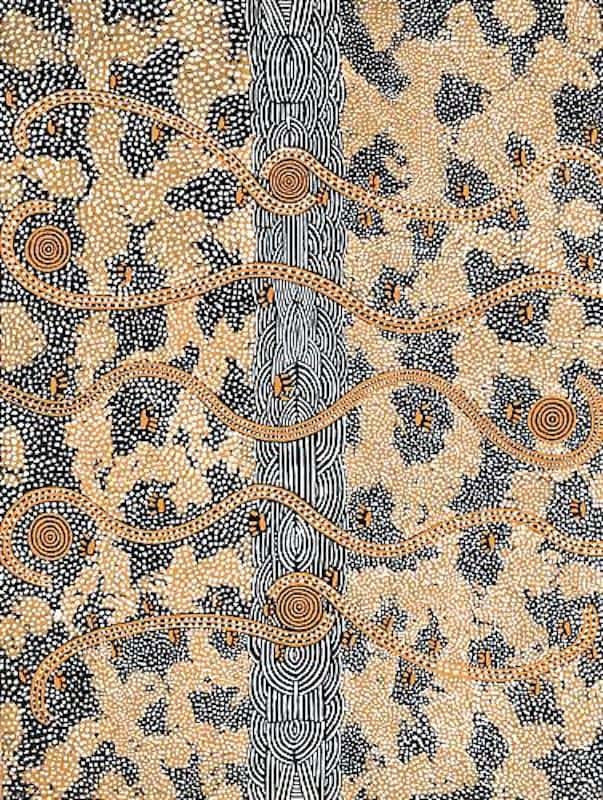
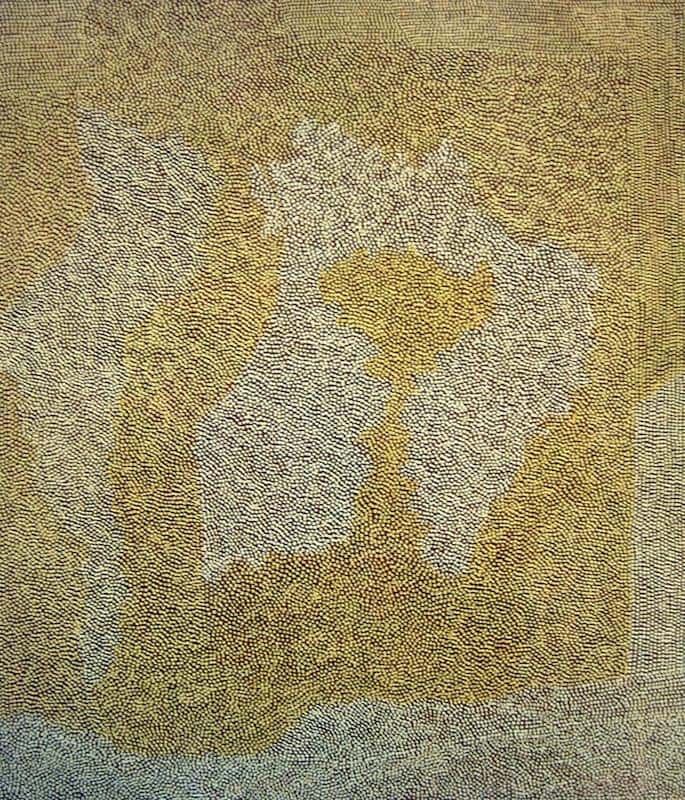
Mouse dreaming by Mick Namarari
Aboriginal Dot Art comes of age
By the early 1980s, the dots were no longer just a background but were a popular design element. Aboriginal artists like Mick Namarari were using the dots in new and increasingly imaginative ways. Aboriginal art was no longer the recording of traditional stories using paint but was increasingly a unique form of abstract art the likes the world had never seen.
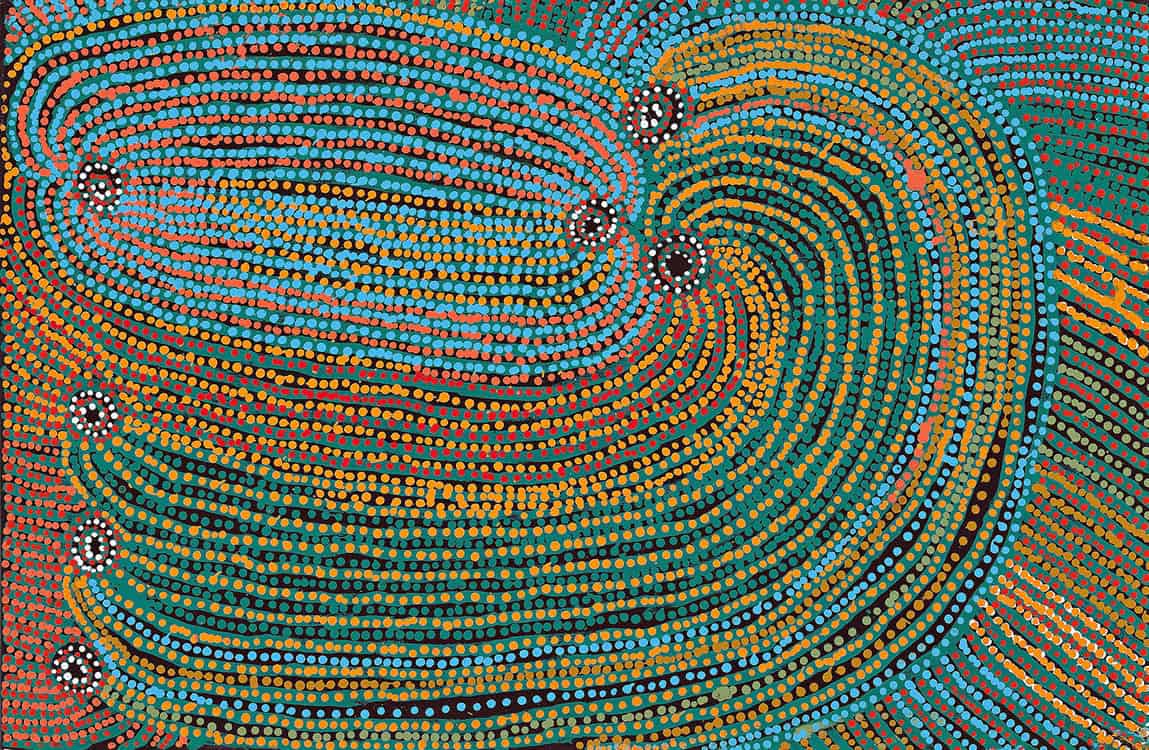
Dot art by Tommy Mitchell
Aboriginal women in Dot Art
The move from secret and secular iconography of the early 1970s to increasingly abstract dot art allowed Aboriginal women to paint.
Female aboriginal artists like Emily Kame Kngwarreye for example became great artists in their own right.
Emily who is now Aboriginal Australias top grossing artist would not have even been allowed inside Geoffrey Bardons Painting group.
Aboriginal art is still evolving. Many new generation artists like Daniel Walbidi now creat abstract masterpieces virtually without dots at all
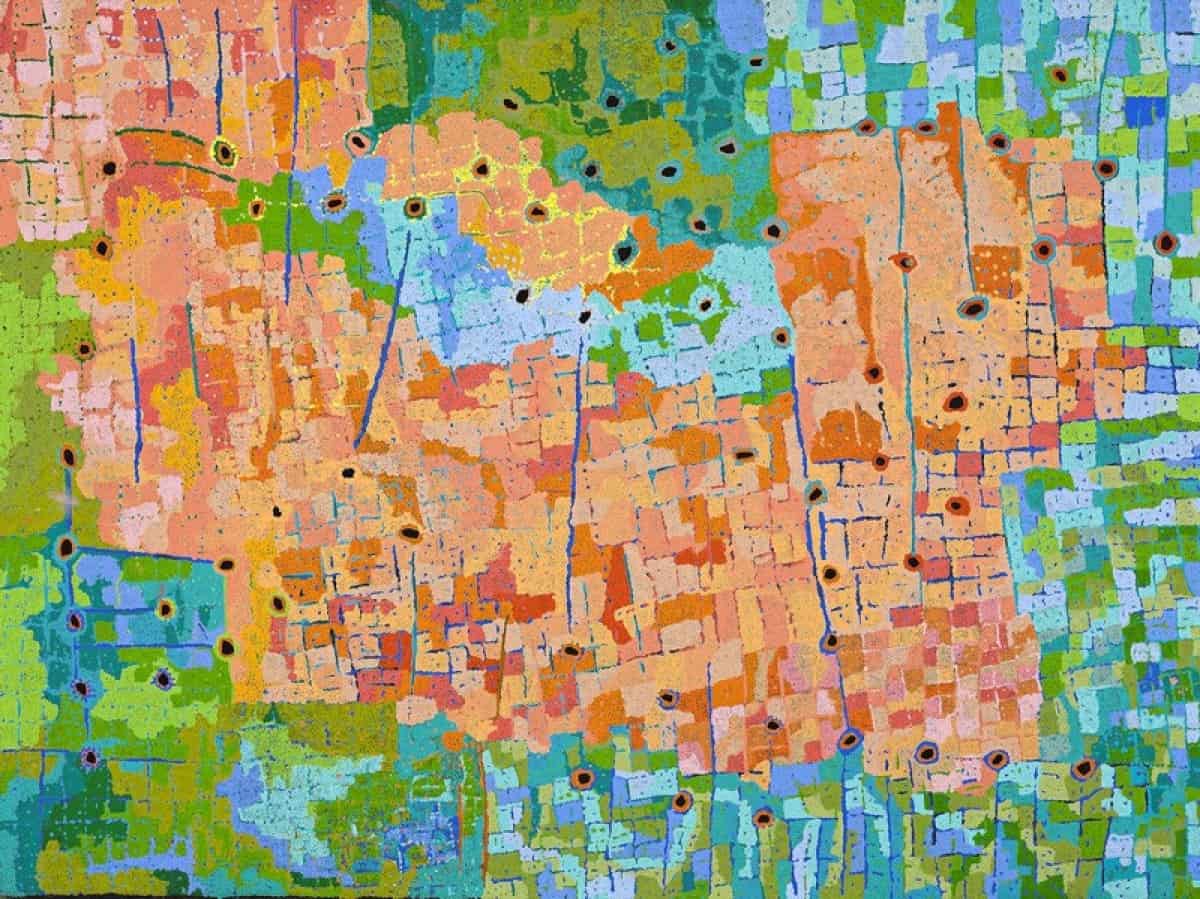
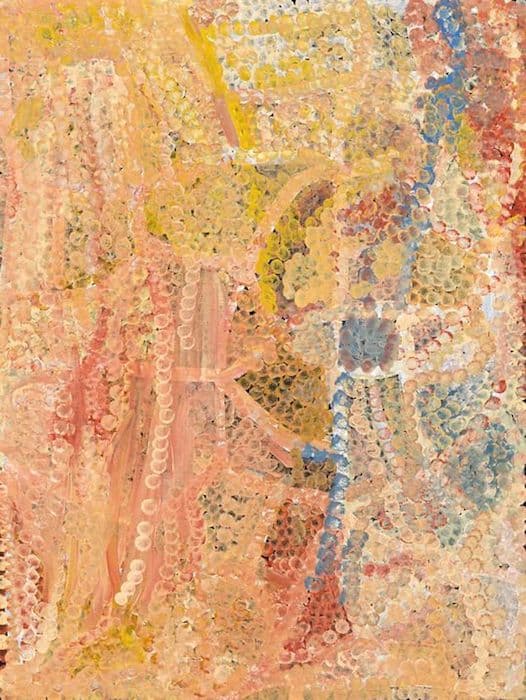
Dot art by Emily Kame Kngwarreye
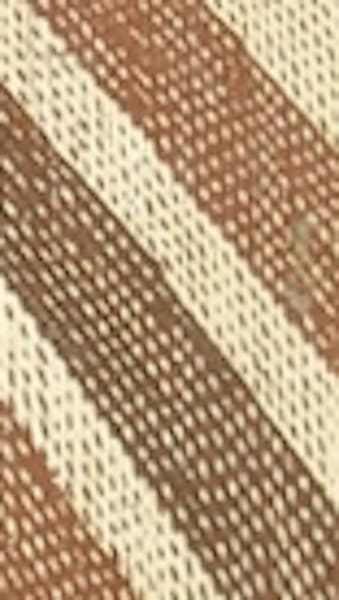
Rarrk Cross hatching
Regional differences
Traditional dot art is mostly used by Central Australian Aboriginals.
Traditionally Eastern Arnhem Land artists from Yirrkala like Mawalan Marika and Narritjin Maymura used Rarrk cross hatching.
Western Arnhem land artists like Dick Murra Murra and Lofty Nadjamerrek for example, used fine parallel lines.
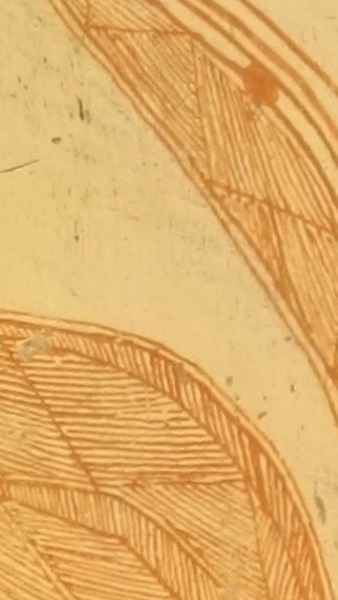
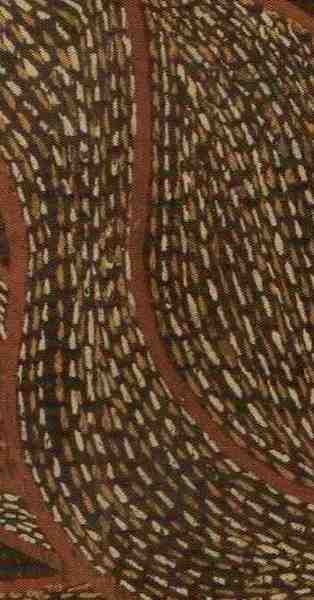
Groote island
dash stippling
Groote Islander however tended to use short dashes as shown on the left.
Tiwi artists used a variety of techniques including Dot art. The tiwi artist Kitty Kantilla used dots so often her nickname was dot dot.
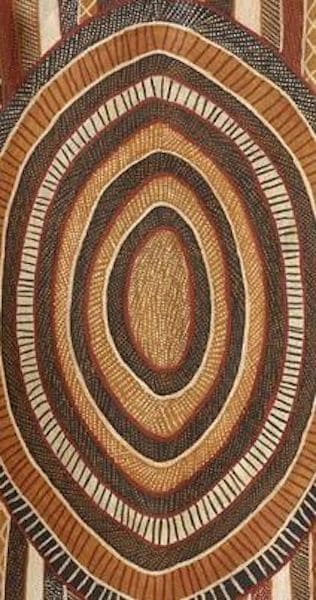
Tiwi Island
variety of techniques
Other Aboriginal Dot Art and Artists
All images in this article are for educational purposes only.
This site may contain copyrighted material the use of which was not specified by the copyright owner.

